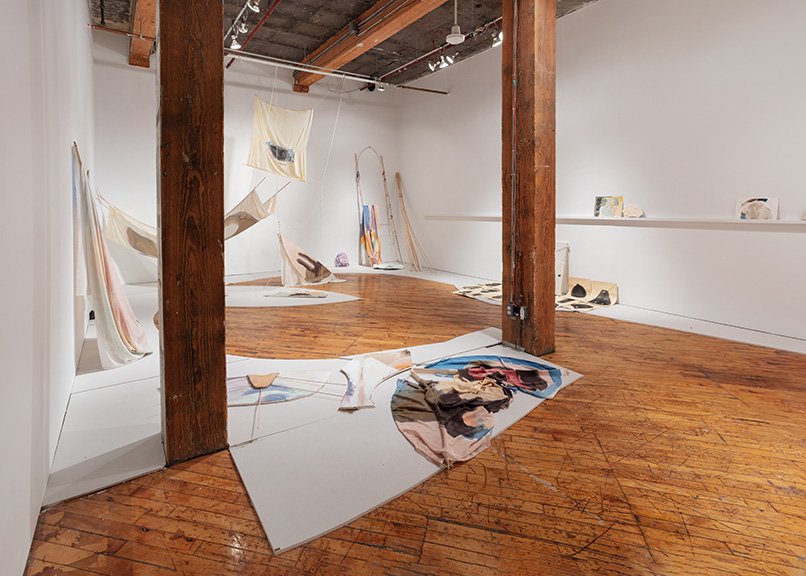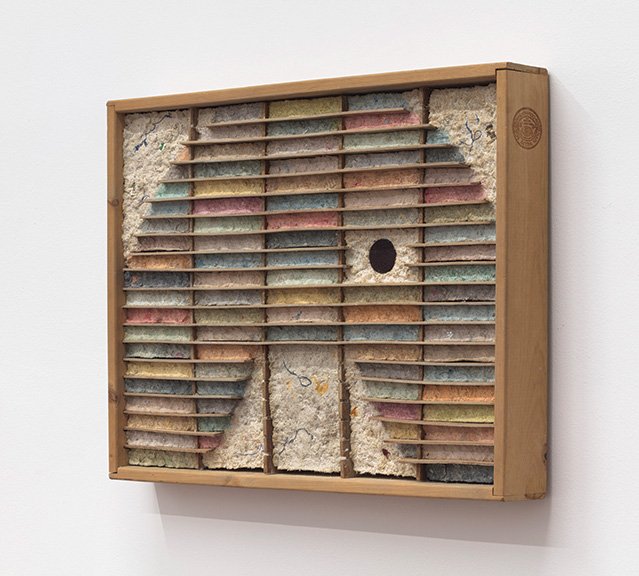Galerie d'art Stewart Hall
December 16, 2023 to February 11, 2024
Exhibition manager: Manel Benchabane
176, chemin du Bord-du-Lac-Lakeshore, Pointe-Claire, QC H9S 4J7
514.630.1254 ex 1778
Artists:
Pardiss Amerian, James Gardner, Ella Gonzales, Magalie Guérin, Phuong Nguyen, Sarah Pupo, Bronson Smillie, Emma Welch
Curators:
Anaïs Castro, Manel Benchabane & Alice Ricciardi
Pardiss Amerian Bed of Balsam Fir, 2022 oil on linen 91.5 x 76 cm Photo credit: Alberto Porro
James Gardner Sulphur Bath, 2022, oil and acrylic on burlap with gesso 210.8 cm x 203 cm
Ella Gonzales Second sentiment, 2023 acrylic on piña silk, maple frame 42.5 x 32 x 9.5 cm
Magalie Guérin Untitled (res 11.1), 2020 oil on canvas mounted on panel 76 x 61 cm Courtesy of Magalie Guérin et Galerie Nicolas Robert
Phuong Nguyen The Empress, 2023 oil on panel 36 x 28 cm
Sarah Pupo Documentation of the exhibition “All things along with us at YYZ”, 2022 variable dimensions Photo credit: Laura Findlay
Bronson Smillie Debris Flow Hotel, 2023 Modified cassette storage case, paper pulp, bar rag, postage stamp, felt pad 45.75 x 61 x 7.5 cm
Emma Welch Spiderling, 2023 wax pastel and coloured pencil on linen over panel 122 x 91.5 cm
The crises affecting humanity today, whether ecological, political, or social, have brought complex philosophical and ethical dilemmas. As a result, existing in today's world inevitably implies navigating metaphysical contradictions. In an increasingly polarizing political and economic society, a radical posture is one that precisely defends the intersection. This is a position that avoids being categorical but instead considers one thing through its opposite; seeks one perspective via its obverse. It is an open posture that allows space for dialogue and discourse; it allows itself to be proven wrong. It's a disposition for empathy.
Cruel To Be Kind / Les plus beaux cauchemars is a project that precisely looks at these processes of confluence. It explores the various ways in which forms of practice may be shown to carry contradictory aesthetic structures and ideals while advocating for arenas of discourse and defending positions of compassion, amalgamation, and intersectionality. The project unfolds into three spaces that will open at different intervals throughout the fall of 2023.
The last chapter of the exhibition takes place at Stewart Hall Art Gallery, in the converted attic of an opulent mansion overlooking St-Louis Lake. For this ultimate segment, the exhibition focuses on painting practices that transcend the boundaries of the traditional canvas or panel, embracing new and unexpected planes that expand the arena of the pictorial onto the sculptural, onto the architectural. Many of the works in the exhibition have been produced especially for the exhibition. This is the case of Pardiss Amerian, a Montreal-based artist who draws from her Persian heritage and has developed a painting technique that includes sanding the surface to confer a stone-like texture to her work.
Sarah Pupo and James Gardner are also producing new installations for the exhibition, which will include materials with which they are both familiar. Pupo's watercolour textile installation will drape a section of the gallery, while Gardner will rely on wire and concrete to build a structure to hold paintings. Gardner’s paintings are themselves an amalgamation of various image fragments fused together in a process that creates considerable quantities of debris. As these accumulate in the artist’s studio, they become sculptural aggregates, which are integrated into the artist’s elaborate painting installations. Bronson Smillie also recuperates materials for his work. His tridimensional paintings recall many artists, from Joseph Cornell's boxes to Doris Salcedo's immobilized furniture pieces and Daniel Buren's striped patterns. Smillie’s work reanimates discarded objects that have become obsolete in today’s Late-Capitalistic society, such as printed road maps, office stationery, address books, etc.
There's also a surprising array of materials used in Phuong Nguyen's mesmerizing compositions. She suspends ceramic shards and painted canvas amidst found or recuperated frames using brightly-coloured plastic yearn often used to make woven shopping bags. As a second-generation Vietnamese refugee, Nguyen is interested in how the diaspora re-root in newfound grounds. She is drawn to what these families carry along with them, even if broken, as a way to rebuild a home in foreign lands. Her work is a material exploration of healing and overcoming generational trauma and cultural wounds. Ella Gonzales is also interested in her family's migratory journey. Relying on her memory and photographic evidence, using 3D modeling software she reconstructs spaces she's lived in before, from her childhood home in the Philippines to former family homes in Saudi Arabia and Canada. Then, she translates these models into abstract compositions painted in a soft and dreamy palette. Similarly, saccharine hues are found in the work of Emma Welch, whose intentions differ. Welch is interested in animal and insect protective and hunting behaviours, particularly mimicry, camouflage, and pattern-making. Like Gonzales, her abstract work results from a preliminary digital manipulation translated into paintings and sculptural installations. Magalie Guerin's ontological research into pictorial relationships has led her to expand her abstract painting practice to integrate ceramic works. The dualities between figure/ground, pattern/color, and space/edge are further complicated on these newly developed irregular vessels.
The variety of practices brought together at Stewart Hall Gallery highlights the hybridity and convergence of painting practices today, showcasing artists who navigate the intersections of various aesthetic structures and ideals. Through spatial contradictions, experimentation with materials, and the exploration of new planes, the selected artists push the boundaries of traditional painting and open up new avenues of pictorial production.
Cruel to Be Kind / Les plus beaux cauchemars is a unique invitation to consider painting's relevance, dynamism, and capacity for transformative expression. It challenges preconceived notions of the medium of painting by fostering an appreciation for the diversity of voices and perspectives within the realm of painting, from figurative to abstract, from meticulous detail to playful experimentation. The exhibition celebrates the unique qualities of painting as a medium, its ability to reflect reality, imagine alternative models, and convey complex messages through the interplay of form, color, and gesture. It further emphasizes the importance of dialogue, discourse, and compassion by embracing the intersectionality of contrasting perspectives. Certainly, the selected artists offer a strong case for painting's potential to help us navigate the challenges ahead.
By Anaïs Castro








